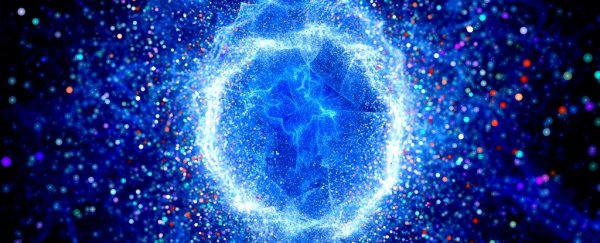A new study involving more than 100,000 volunteer gamers is the latest to show that quantum entanglement works. It's a phenomenon Einstein was famously uncertain about, calling it "spooky action at a distance".
And that description sums it up pretty well – it's the idea that particles can influence each other when they're not connected, even over vast distances. It takes us out of the realm of classical physics and into quantum mechanics.
Einstein didn't completely disagree with the idea of quantum mechanics, but he did suggest something else was happening behind the scenes to cause this "spooky action", something yet to be revealed.
We've already seen demonstrations of quantum entanglement, but it's difficult for scientists to prove exactly what's happening – there's the possibility that hidden, unknown variables are causing these effects, as Einstein thought.
That's where the gang of volunteers comes in. The games they played through smartphones and other devices were designed to generate completely random numbers, a randomness that should prove there's no hidden set of variables or structure at play.
The numbers generated were then used in a series of quantum tests across 12 different laboratories, measuring entangled particles such as photons in a variety of setups.
These experiments are technically known as Bell tests, designed to validate the idea of quantum entanglement. For the first time this research closes one of the best-known loopholes in the Bell test: that the numbers used aren't truly unpredictable.
Getting numbers that are genuinely random is actually notoriously difficult, which is why the army of volunteers was brought on board.
"People are unpredictable, and when using smartphones even more so," says one of the team, Andrew White from the University of Queensland in Australia. "We asked folk to contribute unpredictable numbers, using smartphones and so on."
"These random bits then determined how various entangled atoms, photons, and superconductors were measured in the experiments, closing a stubborn loophole in tests of Einstein's principle of local realism."
That concept of local realism is the idea that actions or observations don't have effects in other locations, and that what we can observe about the Universe stays fixed, even when we're not observing it.
Quantum physics doesn't necessarily stick to those rules. By amassing so many random inputs, the results show that quantum physics really can explain the Universe around us – with no hidden variables involved. Sorry, Einstein.
"Each of the labs carried out a different experiment, to test local realism in different physical systems, and test other concepts related to realism," explains one of the researchers, Martin Ringbauer, also from the University of Queensland.
"We showed that a key property of entanglement in space, so-called monogamy of entanglement, does not hold in the temporal domain."
This study follows on from similar work on Bell tests earlier this year. Scientists are essentially developing new levels of randomness that can prove quantum ideas aren't propped up by some kind of order or pattern buried in the background.
The researchers admit that their experiments are a small part of a bigger picture, and we certainly don't know everything there is to know about quantum physics yet – but it's another important step forward in our understanding of entanglement and local realism.
And it just goes to show there is more that you can do on your phone besides checking social media and browsing the web.
"I also particularly enjoyed the outreach and public involvement side," says one of the researchers, Geoff Pryde from Griffith University in Australia.
"I enjoyed that we gave people an opportunity to do something which influenced how the experiment ran."
The research has been published in Nature.
